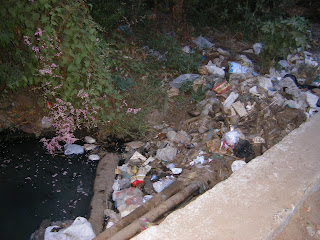In his lecture on November 7, 2011, Dr. Narasimhan, a botanist at MCC, discussed current environmental issues in India India
Dr. Narasimhan informed us that out of the three million people in the world who have died prematurely as a result of indoor and outdoor air pollution, India New Delhi is in the top ten most polluted cities in the world and has twelve times the average number of respiratory diseases due to air pollution as India New Delhi
According to Dr. Narasimhan, the biggest source of air pollution in India India India
One really interesting point that Dr. Narasimhan made is that India
Water quality and quantity is a huge problem in India India India
Municipal and solid wastes are largely responsible for the contamination of surface and ground water along with depletion of groundwater. In regards to water quantity, agriculture is the main consumer of water, constituting 85% of water use in India
Rice Paddy Field
Drinking water availability is 78.4% in rural areas and 84.9% in urban areas in India
On the side of the road in Tambaram near MCC
It is evident from Dr. Narasimhan’s lecture and my personal experiences here that India India


EnvironmentCare.in(http://www.environmentcare.in/) is India's 1st environmental B2B portal.It is an online one stop go Green source to provide end to end solutions for environment protection, pollution control management, energy conservation, renewable energy, e-waste management and safety management.
ReplyDeleteEnvironmentCare.in also provide Green News, live discussion, Blogs, Environment friendly calculator, Games with Learn and much more interesting and educational section.
You can follow us on
http://www.facebook.com/environmentcare.in,
http://www.linkedin.com/in/environmentcare and
https://twitter.com/B2B_Portal.
Nice blog and very informative thank you for sharing such a great blog.
ReplyDeleteProperty Lawyer India